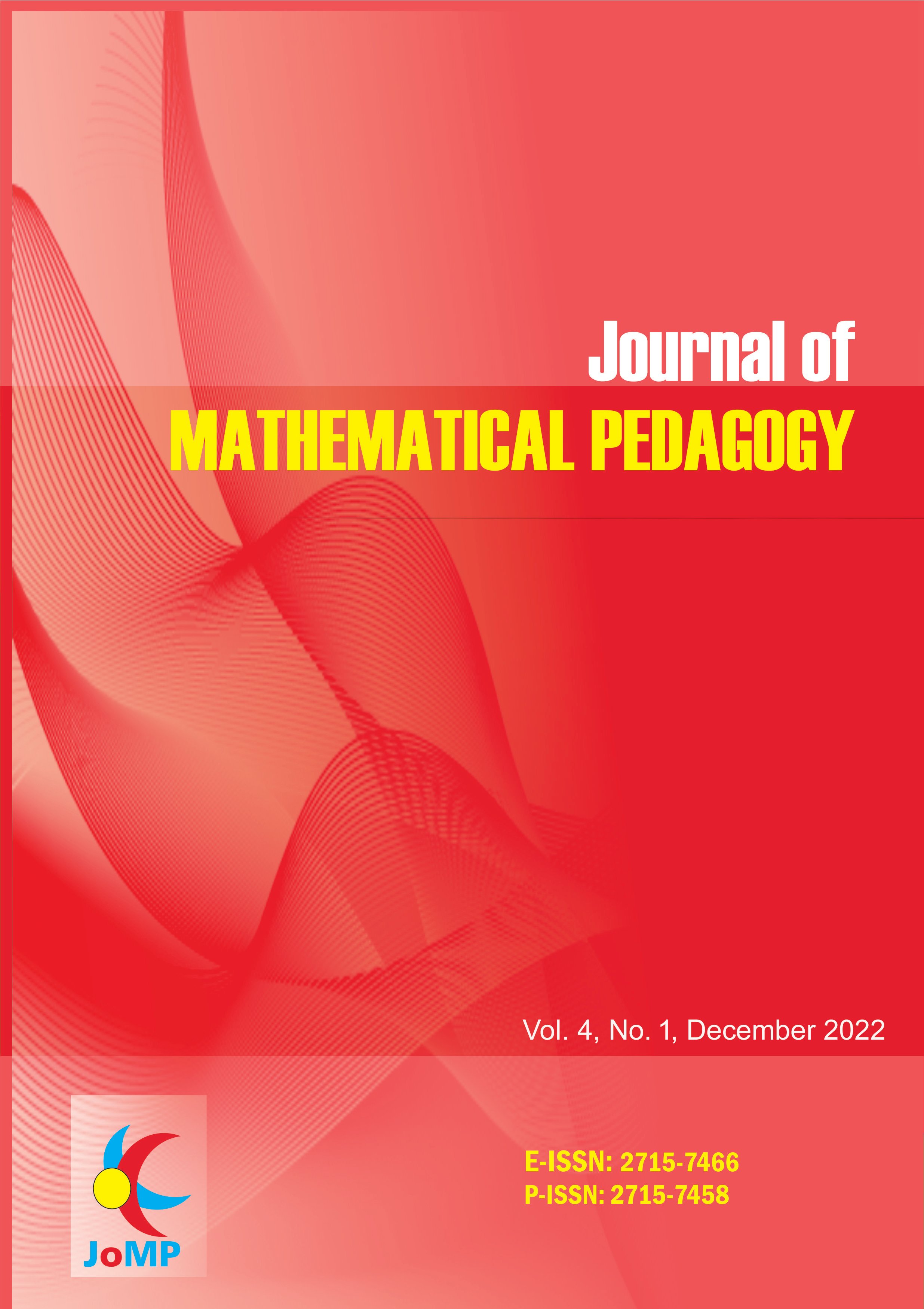Students’ Creativity in Solving Ill Structured Problem Context Calorie Intake
DOI:
https://doi.org/10.26740/jomp.v4n1.p42-56Keywords:
Creative Thinking Level, Ill Structured Problems, Mathematical Ability, Calorie IntakeAbstract
In math learning, creative thinking is very important because it allows broad thinking to find new solutions to problems. This study aims to describe the level of students' creative thinking in solving ill-structured problems in the context of calorie intake. This type of research was descriptive with a qualitative approach. Researchers chose three students in class VIII with different mathematical abilities (high, medium, and low) based on their value as research subjects. To collect data, researchers used ill-structured problem tests and interviews. The data were analyzed based on the level of students' creative thinking and follow-up interviews. The results showed that in aspect fluency, S1 and S2 could give two correct answers, while S3 only gave one correct answer. Aspects of flexibility: S1 and S2 can provide alternative answers using different mathematical concepts, while S3 only provides one way of providing alternative answers. Aspects of originality: S1 can provide two unique solutions, while S2 and S3 produce ordinary solutions. Based on this, S1 is included in level 4 (very creative), S2 is included in level 3 (creative), and S3 is included in level 0 (not creative). Based on the results of this study, designed learning must stimulate students' creative thinking abilities, such as by providing problem-solving questions that allow students to solve them with various strategies.
References
Aini, A. N., Mukhlis, M., Annizar, A. M., Jakaria, M. H. D., & Septiadi, D. D. (2020). Creative thinking level of visual-spatial students on geometry HOTS problems. Journal of Physics: Conference Series, 1465(1). https://doi.org/10.1088/1742-6596/1465/1/012054
Al - Ghofiqi, M., Irawati, S., & Rahardi, R. (2019). Analisis Berpikir Kreatif Siswa Berkemampuan Matematika Rendah Dalam Menyelesaikan Ill-Structured Problem. Jurnal Pendidikan: Teori, Penelitian, Dan Pengembangan, 4(10), 1386. https://doi.org/10.17977/jptpp.v4i10.12883
Calavia, M. B., Blanco, T., & Casas, R. (2021). Fostering creativity as a problem-solving competence through design: Think-Create-Learn, a tool for teachers. Thinking skills and creativity, 39, Article 100761. https://doi.org/10.1016/j.tsc.2020.100761
Junaedi, Y., Wahyudin, & Juandi, D. (2021). Mathematical creative thinking level on polyhedron problems for eight-grade students. Journal of Physics: Conference Series, 1882(1). https://doi.org/10.1088/1742-6596/1882/1/012052
Miles, M. B., Huberman, A. M., & Saldana, J. (2014). Qualitative data analysis: A methods sourcebook (3rd ed.). SAGE.
Putri, I. W. S., Trapsilasiwi, D., Hobri, H., Oktavianingtyas, E., Safrida, L. N., & Aini, N. (2019). Creative thinking skill with adversity quotient based on lesson study for learning community. Journal of Physics: Conference Series, 1211(1). https://doi.org/10.1088/1742-6596/1211/1/012110
Shoimah, R. N., Lukito, A., & Siswono, T. Y. E. (2018). The Creativity of Reflective and Impulsive Selected Students in Solving Geometric Problems. Journal of Physics: Conference Series, 947(1). https://doi.org/10.1088/1742-6596/947/1/012023
 Abstract views: 191
,
Abstract views: 191
, PDF Downloads: 264
PDF Downloads: 264





